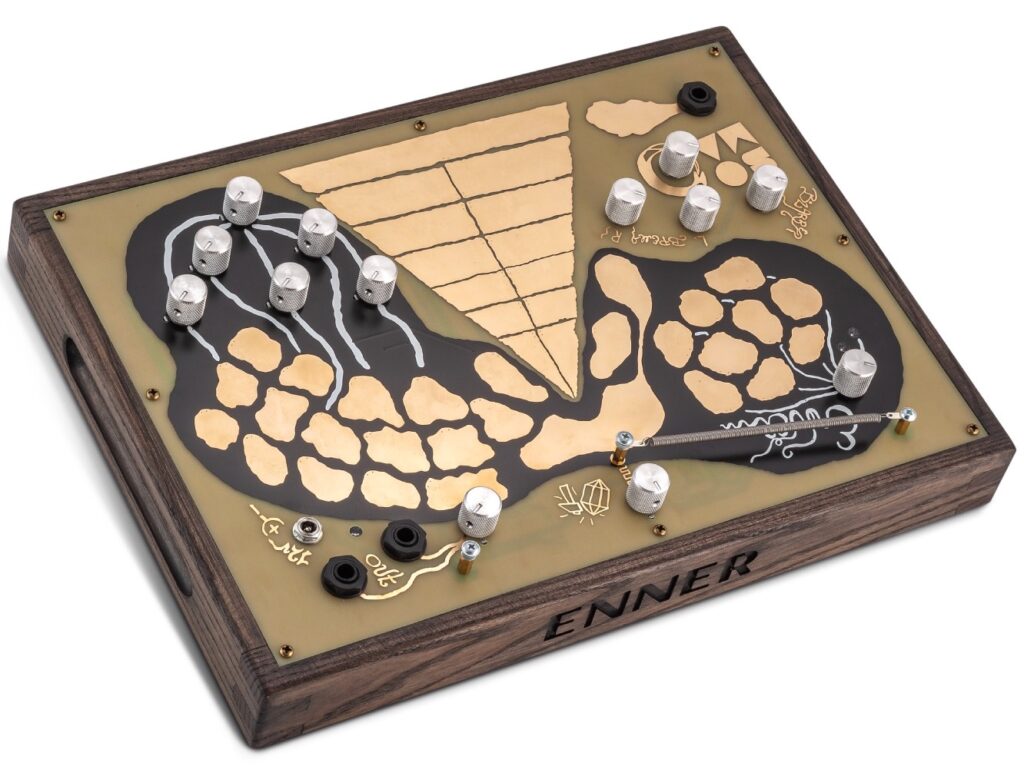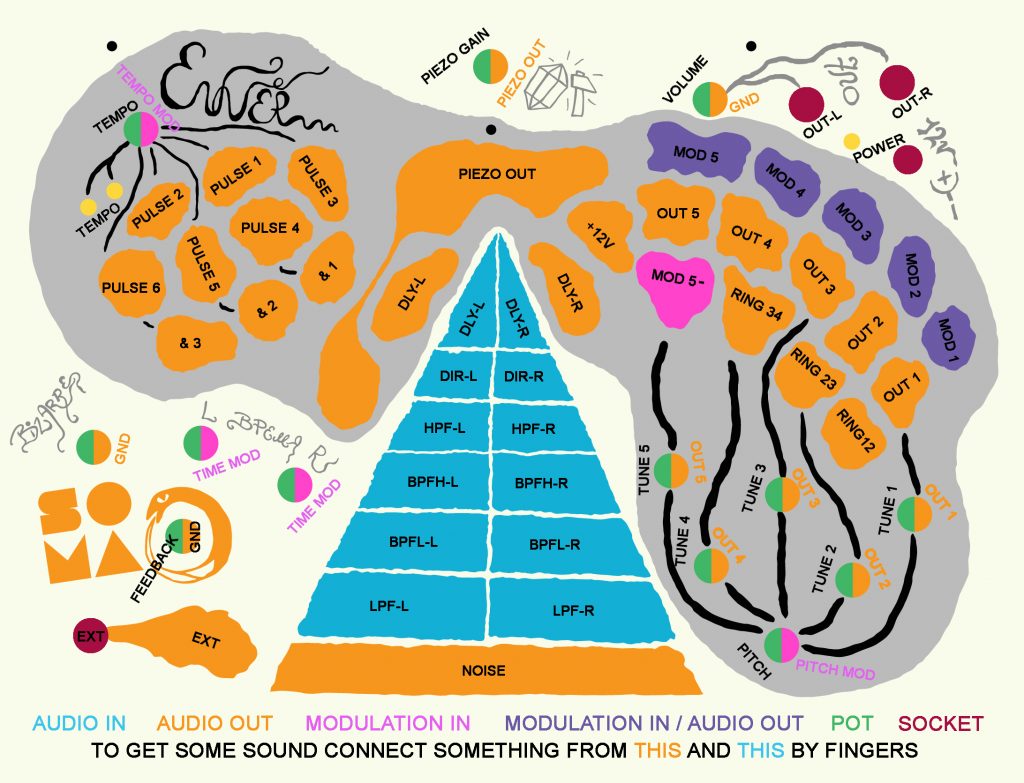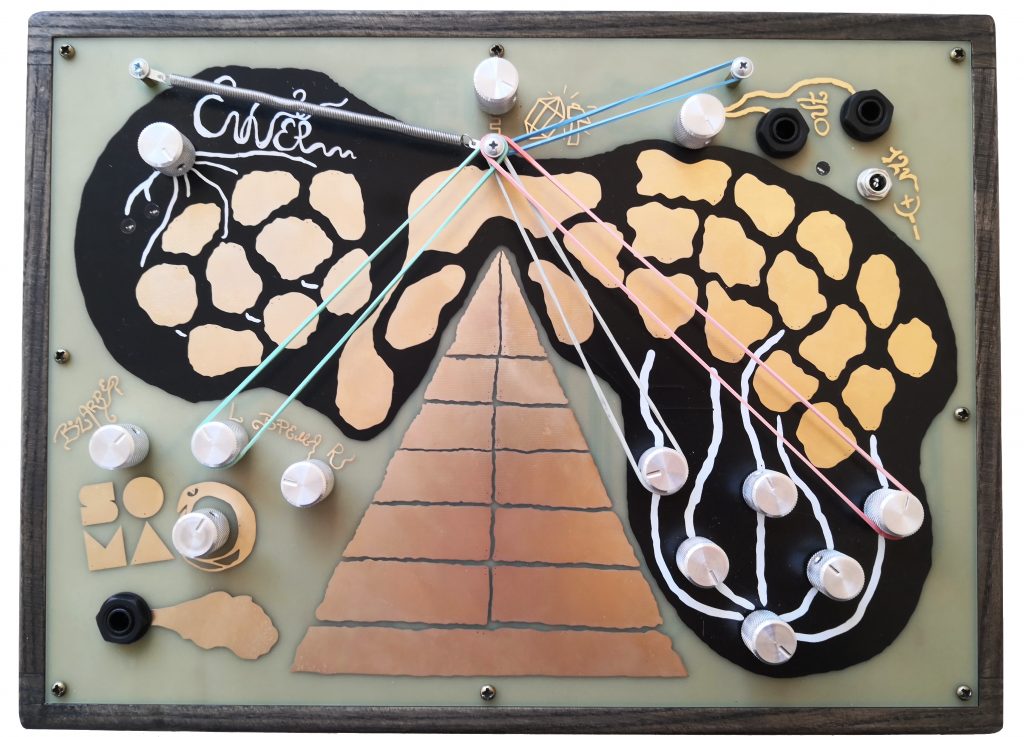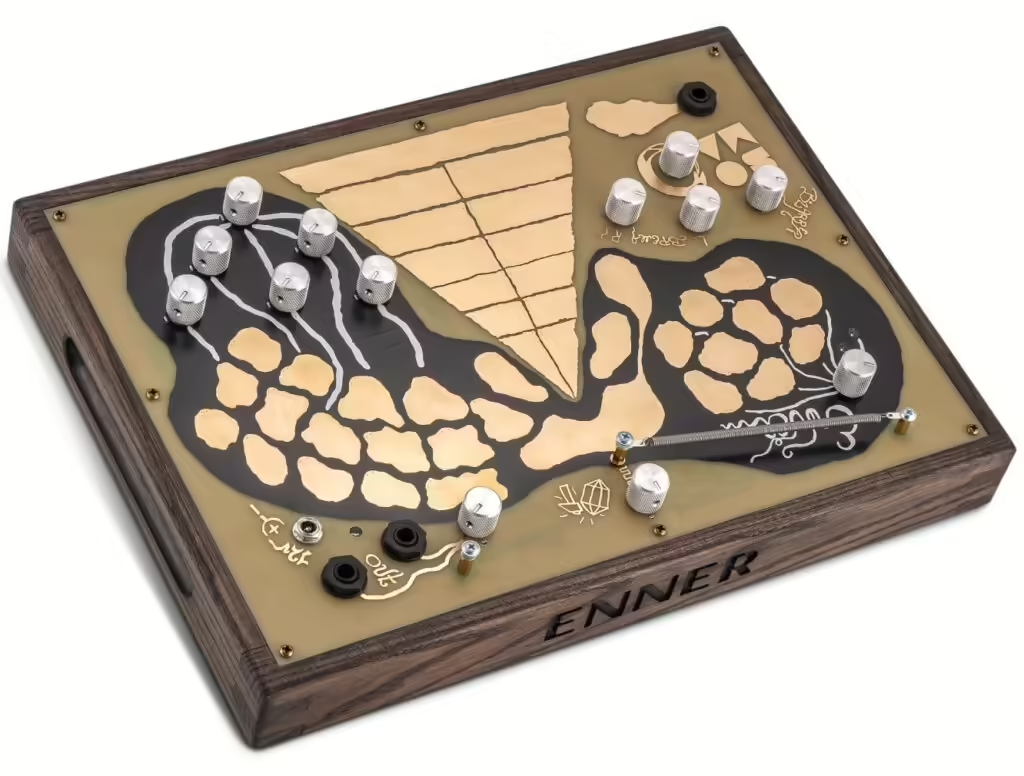Soma Laboratory Enner review | Juno Daily
Soma’s body-patching synth offers a unique take on analogue synths. If you’re feeling experimental, this could be the instrument for you.

Soma Labs never take the obvious approach. Instead, you’re pretty much guaranteed something experimental from this boutique brand. The Soma Laboratory Enner is a case in point: it’s an analogue synth of sorts, but you won’t find anything as conventional as a keyboard or even controls for basic features like filters and envelopes. The Enner is built around a printed circuit board featuring unlabelled expanses of metal designed to be touched with your fingertips. Your body becomes part of the synth circuit itself, with low voltage currents passing through you as you patch signals from one part of the synth to another. The concept draws on traditional analogue synthesis and semi-modular concepts as well as electroacoustic theory and sound art in order to create something quite unique.
Designed in conjunction with Danish sound artist SiSTOR (aka Dalin Waldo), the Enner contains two main analogue sound generation sections: in the top left, a rhythm/bass synth section which divides a master clock into “rhythmical clicks, basses and octave tones”; down in the bottom right, a five-voice synth with knobs to tune each voice separately and a master pitch knob to transpose all five simultaneously. The synth sections are mono but the output of the Enner is stereo, with signals routed to left and right channels of the delay and filter circuits.
The synth sections themselves aren’t the only ways to generate sound with the Enner. The metal spring in the top left corner of the unit isn’t a spring reverb as you might assume, but an object for sound generation; twang the spring and its vibrations are picked up by the piezo microphone built into front panel, working as an additional sound source. Soma suggest hooking rubber bands around the knobs and creating a sort of improvised harp, twanging the bands and routing the signal from the piezo mic. There’s also an audio input to process external signals, which can be used for synth tones but would also lend itself nicely to processing vocals.

Each of the brass-coloured contact pads represents a different input or output, which can be patched together by touching two or more contacts simultaneously. Each of the metal control knobs also works as a contact point for an input or output which relates to the functionality of the knob (for example, the tempo knob for the rhythm/bass synth acts as an input for tempo modulation). By our reckoning, that means you have a total of 23 different audio sources (including the signal from the external input socket), 12 audio input patch points and 10 modulation inputs. You can also sync the rhythm/bass section to an external clock signal, but there’s no conventional CV control of pitch or the option to interface with other equipment for CV/gate control and modulation.

Getting your head around the Enner’s unique approach takes a little while, but there’s a logic to the layout, with most of the sound sources around the outside and destinations – direct outputs, filter inputs and delay inputs – in the triangular central section. The delay circuit, in the bottom left of the front panel, is relatively simple, pushing into self-oscillation at higher feedback settings. The filters, meanwhile, are fixed high-pass, band-pass (high mid/low mid) and low-pass circuits split into left and right channels.
You can play the Enner in quite conventional terms if you want, consulting the manual and planning logical patches from one section to another in order to achieve certain sounds, but that feels slightly at odds with the experimental nature of the instrument. Instead, just making connections at random leads you into interesting results. You soon find that you build up a muscle memory of sorts, instinctively reaching for certain combinations of pads to connect. Finger drumming in the central section works well to create rhythms and grooves of sorts, routing signals through the different bands of the filter section.

Sonically, the Enner puts you in relatively basic but characterful analogue synth territory for the most part. The rhythm/bass and five-voice synth sections generate fairly simple tones and the filtering options are limited, but the ring modulation circuits generate complexity and things always have an edgy, gritty feel.
As you’ve probably gathered by now, the Enner is unashamedly experimental. This isn’t a conventional synth by any stretch of the imagination, but it’s one with a distinctive personality. The Enner feels like a live performance instrument above all else – it’s an instant sound art/noise/drone machine – but could also work in the studio for creating loops to sample. If you can get to grips with its unique approach, this is a distinctly expressive instrument.
Greg Scarth
You may also be interested in…


